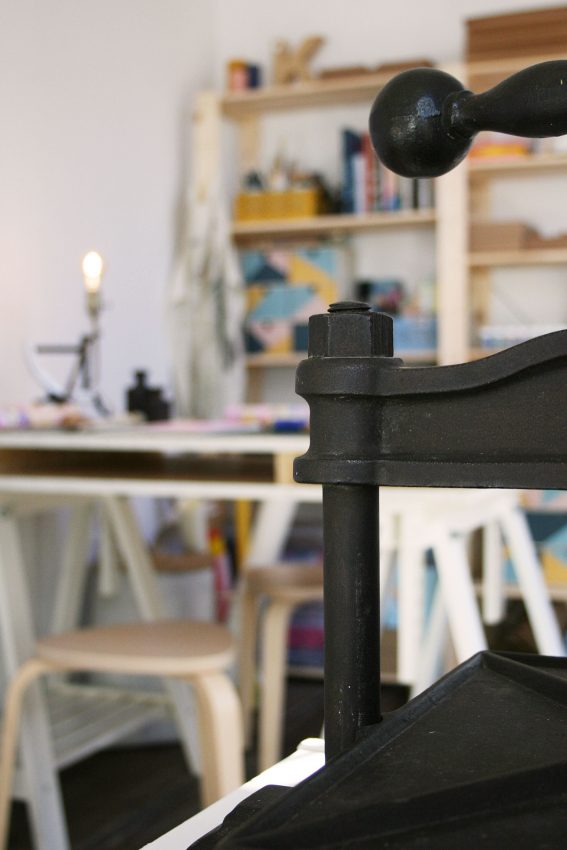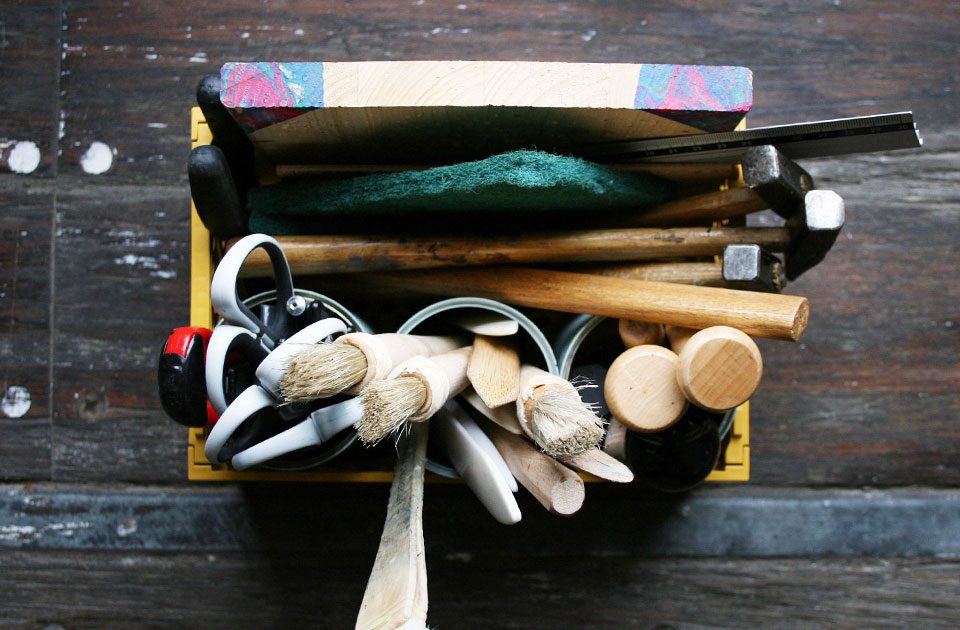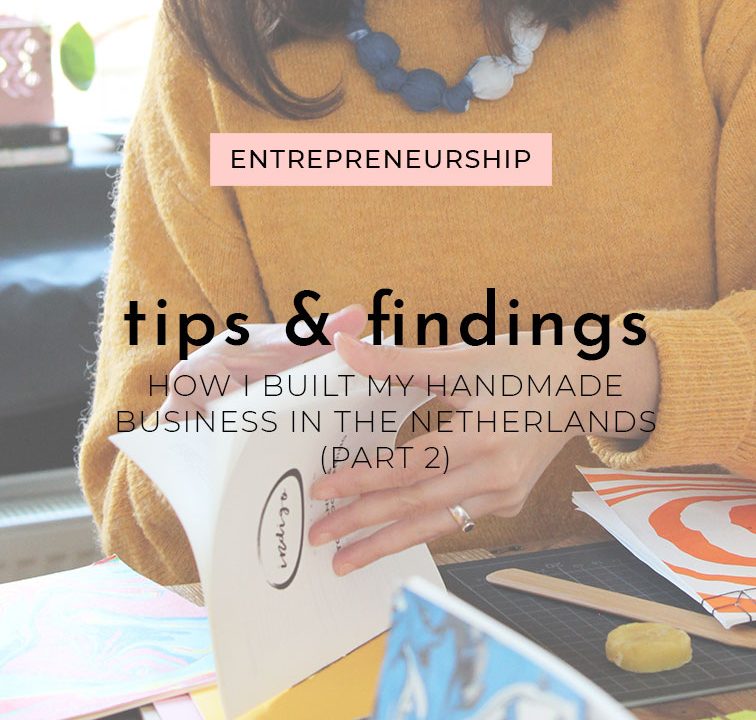
Girlboss 101: Planning & Organization Tips For Your Handmade Business
09/03/2021When I started Indigo Craft Room almost 3 years ago, I had no clue about pricing my products. If you are an entrepreneur or small business owner in the handmade industry, you probably started your business because you wanted to express and share your creativity with the world. Or maybe because you were looking for an exit from a corporate job…
There are many other reasons, sure. But I’m 100% sure none of them is because you wanted to make money. With the time we learn that in order to keep our handmade business up and running, and inspiring and helping our community – yes, we need to make money. As artists and makers, we don’t like to talk about money, it’s one of those uncomfortable truths we have to face at some point.
It all begins the moment you have to put a price on your work, product, and time. It isn’t easy, there are many formulas and in the end, you have to find out which one matches your very own situation. Whether you are just starting or are in the middle of a re-conception of your handmade business, here are my tips for finding the right pricing for your products and services as a maker and artist.
*** Please take into consideration that the recommendations shared in this post are based on my very own experience and therefore I cannot guarantee any success in your own endeavors. This is not a post with business advice, but merely the story of how I run my own business and the processes and tools that work for me.

-
YOUR LIFE, YOUR TIME, YOUR PRICE
Have you heard the saying “time is money”? That’s just so true! As handmade business owners, we tend to underestimate the amount of time we need for making each one of our creations. But the time you should consider when pricing your products or services not only refers to the actual “making or creation time”. If you are an all-in-one girlboss, you probably also do the product photos, update your e-commerce platform, pack the orders, and so on. This is therefore also working time you should keep in mind when calculating your prices.
Furthermore, as an entrepreneur, you are obligated by law to pay different kinds of taxes and even for your own medical insurance, depending on where you live. If you would be hired by a company, your employer would be paying a part of the taxes and social and medical insurances. But when you are a full-time entrepreneur, you are on your own.
Do you have children? Do you pay rent or have a mortgage? Is your family rich or do you have a part-time job next to your own handmade business? Do you live in a big city? These are factors that will determine whether your hourly rate is less or higher than the rest of the entrepreneurs you might know.
As a rule of thumb, you should be considering all the expenses you have as an individual and calculating the amount of hours/days you can or want to work per month. This way you can roughly determine your hourly rate or the price you have to charge for each worked hour. There are many resources online and excel sheets you can use for calculating your hourly rate. I will link to those at the end of this article.
Another way of easily finding out your hourly rate as a freelancer or entrepreneur could be multiplicating your current hourly wage (as an employee) by 3 or 4 times. Of course, this is just a rough calculation based on the fact that you are currently working in a similar position or industry, and that you would need to pay a certain percentage of your wage or income in taxes.
I also like to have different hourly wages, depending on the product or service I am offering. It isn’t the same to offer a private workshop for a large corporation as for a school or non-profit organization. I know, this can easily overwhelm you. So take your time, one thing at a time. You are always free to adapt your hourly rate and this should change of course with time. The more experienced you are and the higher your company revenue is, the more room you will have for changes.
-
YOUR SUPPLIERS, YOUR BEST FRIENDS
For many handmade business owners, buying materials from the right suppliers can be a reason for business success or failure. Have you heard from retailer discounts or wholesale? Ideally, you would be buying your materials and supplies at a lower rate than the retail price, so you can have more margin and make a benefit over the final product price. This applies no matter whether you are buying materials for making a final product, supplies that will be sold as they are, or materials and tools you need to deliver a service, e.g. a creative workshop.
When I started my handmade business, I had zero ideas about this. I knew I had to find a way to buy my materials cheaper, so I could have some margin for my own benefit, but I never looked for wholesale or retailer prices at the very beginning. My mistake, yes. Mostly not because I didn’t know which doors to knock on, but because I considered myself “too small” for being considered a business. Well, guess what, it doesn’t matter!
Most of the companies and suppliers offer retailer discounts, wholesale and graduated prices. All you need is to prove that you are a legitimate business owner, e.g. by sharing your VAT number or your chamber of commerce registration. There are some “risks” of course, as many of these companies have a minimum order amount (200 € – 300 € from what I have experienced). As small handmade business owners, we don’t always have that amount of money to spend at once. Or maybe we are afraid of buying in bulk and then not be able to sell those products and lose money. But these are risks you have to take when you are building your own business. So, next time you are about to place an order, check for the right suppliers, and don’t be afraid of asking for a retailer or wholesale discount!
-
YOUR FIXED COSTS
Some of you know that I rented a studio in the city a few months ago. The plan was to run workshops and according to my calculation, the revenue I would make from those workshops would be enough for covering my fixed costs like the rent. Unfortunately, due to the Covid-19 crisis, I wasn’t able to open my studio for workshops and so I had to figure out another way for paying the rent at the end of each month. Just as the rent for a studio, as a handmade business owner you will have many other fixed costs (monthly, quarterly, or annually). These are costs you have to cover whether you sell something or not, e.g. your webspace provider and domain, e-commerce platform, bank account, internet, software and online tools, company insurances, and government taxes, among others.
The smaller you are, the fewer fixed costs you will probably have. But don’t underestimate them!
There are some ways to save up on fixed costs, e.g. booking a place at a co-working space instead of renting your own office or studio or canceling subscriptions or services you don’t need for a period of time. Analyze your fixed costs every now and then and check where your money is going, so you can decide if these expenses can be cut or not.

-
YOUR AUDIENCE
Each of us starts with a rough idea of our ideal customer or persona, right? Are your products only for women, men, children, pets? Do you sell your products online or offline? Who would attend your creative workshops? These are just some of the questions you should be asking yourself when defining your ideal customer. And it’s fine to have different audiences or to change your ideal customer as you and your company grow and develop.
Indigo Craft Room at first was an online shop for handmade journals and photo albums. Later I added a product range of DIY supplies for chalk paint and upcycling projects. A year ago I launched my first DIY kits, added product categories for bookbinding and marbling supplies, and started organizing workshops. As we develop and grow as entrepreneurs, so does our offering and of course, the audience we are selling to.
It isn’t the same to sell your art in a small town market as in the most expensive city neighborhood. Or to recall my example from the beginning, organizing a workshop for a large corporation vs. for a non-profit organization. As your audience changes, the prices for your products and services should, as well.
-
TEST, TEST & NEVER STOP TESTING
Many companies constantly run A/B tests to learn more about customer behavior and find out which offer is more popular or reports a better revenue. Many of us handmade business owners don’t have the know-how, time, or resources to test these marketing strategies. But you can still test, yes!
When it comes to creative workshops, I usually offer a “launching price”. This gives me the possibility to test whether there is an audience for this workshop, the content is suitable and people like it, or the pricing is realistic or I should raise or lower it.
There are many variables you can test in order to adjust your pricing, e.g. a workshop during the week could be cheaper than on the weekend, you can do pre-order and offer your product at a cheaper price during a certain period of time, and so on.
-
RESOURCES, BOOKS & MORE
Let the pros speak and guide us! I shared my tips, experiences, and insights about when it comes to finding the right pricing for my handmade business. Now, let me share some links, books, and podcasts from the experts in the field with you.
-
- Managing your finances as a creative professional by Mònica Rodríguez Limia, Domestika
- The maker’s business tool kit by Nicola Taylor
- Company of One by Paul Jarvis
- How to identify your ideal customer avatar by Amy Porterfield
- Make art that sells by Lilla Rogers
I cannot repeat it enough: don’t be afraid of changing your prices and adapting them while you and your handmade business continue to grow and develop. Most of us start a business without knowing exactly how everything works. So it’s normal to learn new things down the road and apply them later to our business strategy, including of course our product and service pricing.
And next time you compare yourself with another girlboss or entrepreneur, remember that each of us is in a very different situation. So the pricing that makes sense to someone else, might not be realistic for you.
Your crafty fellow,
Karen




